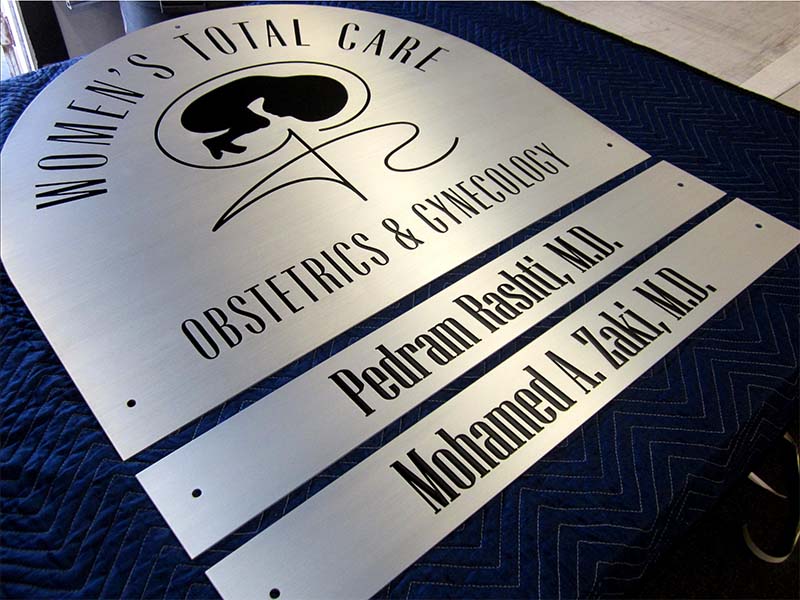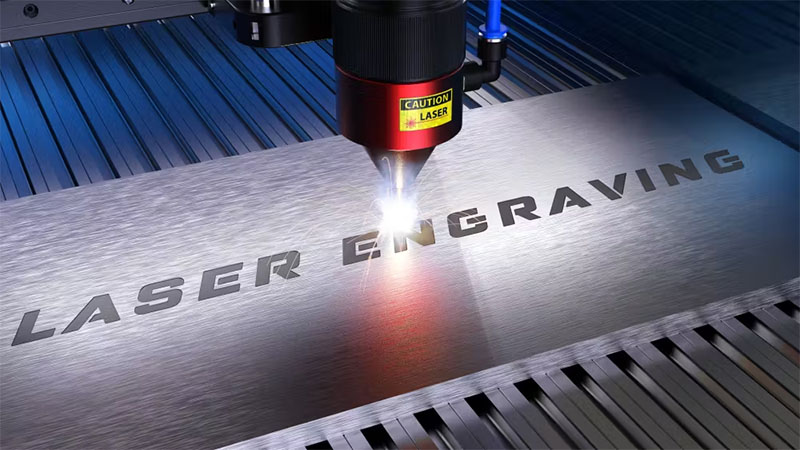In the world of modern manufacturing and customization, laser engraving and marking on aluminum have emerged as highly versatile and precise techniques. Coupled with the concept of engineering tolerance, these processes offer a wide range of applications across various industries.
Laser engraving on aluminum involves using a focused laser beam to remove material from the aluminum surface, creating a permanent and detailed design. The laser beam is directed onto the aluminum surface with high precision, controlled by a computer program. The heat generated by the laser causes the aluminum to melt and vaporize, leaving behind a precise engraving.
1. High Precision:Laser engraving offers extremely high precision, allowing for intricate designs and fine details. The laser beam can be controlled with micrometer-level accuracy, ensuring that even the smallest features are accurately reproduced.
2. Durability: The engravings created by laser engraving are highly durable and resistant to wear and tear. The heat-affected zone is minimal, resulting in a clean and long-lasting mark.
3. Versatility: Laser engraving can be used on a wide variety of aluminum surfaces, including flat sheets, curved objects, and even complex three-dimensional shapes. It can also be combined with other processes such as painting or anodizing to create unique finishes.
4. Speed and Efficiency: Compared to traditional engraving methods, laser engraving is much faster and more efficient. The computer-controlled process allows for rapid production of multiple identical engravings.
1. Design Preparation: The first step in laser engraving aluminum is to create the design to be engraved. This can be done using graphic design software or by scanning an existing image. The design is then converted into a digital format that can be read by the laser engraving machine.
2. Material Preparation: The aluminum substrate to be engraved is cleaned and prepared to ensure a smooth surface for the engraving. Any contaminants or oils on the surface can affect the quality of the engraving.
3. Laser Engraving: The prepared aluminum substrate is placed on the laser engraving machine. The laser beam is focused on the surface and controlled by the computer program to follow the design. The laser power, speed, and frequency are adjusted based on the thickness and hardness of the aluminum and the desired depth of the engraving.
4. Finishing: After the engraving is complete, the aluminum part may require some finishing touches. This can include cleaning off any debris or residue from the engraving process, applying a protective coating, or polishing the surface to enhance the appearance.

Laser marking on aluminium is a process that uses a laser beam to create a permanent mark on the aluminum surface without removing any material. The laser beam alters the surface properties of the aluminum, creating a contrast between the marked and unmarked areas. This can be achieved through processes such as oxidation, color change, or surface roughening.
1. Non-Destructive: Unlike laser engraving, laser marking is a non-destructive process that does not remove any material from the aluminum surface. This makes it ideal for applications where the integrity of the part is crucial.
2. High Contrast: Laser marking can create marks with high contrast, making them easily visible and readable. The marks can be in different colors depending on the laser parameters and the type of aluminum being marked.
3. Fast and Efficient: Similar to laser engraving, laser marking is a fast and efficient process that can be used for high-volume production. The marks can be created in seconds, and multiple parts can be marked simultaneously.
4. Traceability and Identification: Laser marking is widely used for traceability and identification purposes. It can be used to mark serial numbers, barcodes, logos, and other identifying information on aluminum parts.

1. Design Preparation: As with laser engraving, the design to be marked is created using graphic design software or by scanning an existing image. The design is then converted into a digital format that can be read by the laser marking machine.
2. Material Preparation: The aluminum substrate to be marked is cleaned and prepared to ensure a clean and uniform surface for the marking. Any contaminants or oils on the surface can affect the quality of the mark.
3. Laser Marking: The prepared aluminum substrate is placed on the laser marking machine. The laser beam is focused on the surface and controlled by the computer program to create the mark. The laser power, speed, and frequency are adjusted based on the type of aluminum and the desired appearance of the mark.
4. Inspection and Quality Control: After the marking is complete, the aluminum parts are inspected to ensure that the marks are clear, legible, and meet the required specifications. Any defective parts are rejected or re-marked if necessary.

In conclusion, laser engraving and marking on aluminum, along with engineering tolerance and engraving on metal in general, offer a wealth of possibilities for customization, identification, and functional enhancement. Understanding the principles, advantages, and production processes of these techniques can help designers, engineers, and manufacturers make informed decisions and achieve high-quality results.
Whether it's for industrial applications, artistic creations, or personalization, laser engraving and marking on aluminum are powerful tools that can unlock new levels of precision and creativity. By carefully managing engineering tolerance and considering the various factors involved in engraving on metal, it is possible to create durable, accurate, and visually appealing engravings and marks that meet the specific needs of any application.